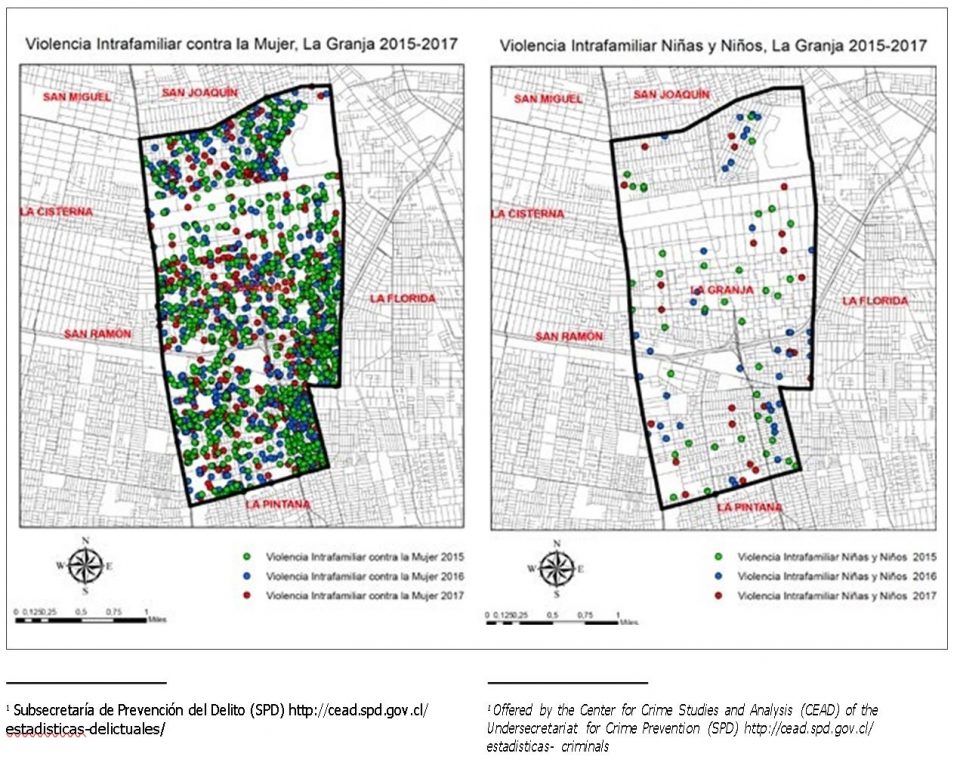Neighborhood segregation, social inclusion and violence in minors
By: José de la Cruz Garrido
Associate Professor, School of Government
Since 2016, based on an investigation developed for the Subsecretariat for Crime Prevention (SPD), researchers from the Schools of Government and Engineering at UDD proposed the construction of an early warning system of social and situational risk for children and teenagers (NNA). This interdisciplinary research proposal arises from work carried out that same year in three area schools characterized by neighborhood segregation and social exclusion of inhabitants in the San Bernardo commune. Since then, a series of offices and municipal schools have collaborated in Villa Padre Hurtado and El Sauce-Bajos de Mena (Puente Alto), La Pintana Centro, Los Nogales (Estación Central), and in the San Luis axis (Quilicura). Evidence for the diagnosis was clear: a population of young people have dropped out of the school system, or while still attending classes, are enrolled in schools without necessary tools to address this difficult problem. Schools tend to be used as places for early recruitment of young people for early insertion into crime, drug trafficking or problematic drug use, among other associated risks.
These neighborhoods are characterized as highly stigmatized and, according to the SPD in their Diagnostic Report of Priority Neighborhoods Program (2019). Their population is at least 25% children and youth, over 30% of households have female leadership, at least 20% of households are overcrowded, and over 50% are part of the first quintile group, i.e., the poorest group in the country. In fact, according to Casen 2017 12.7% (528,574) of young people between 15 and 29 years old neither study nor work. However, when separated by communes and considering children only between 2 and 17 years old, Vitacura registered 3.4%, whereas Pintana reached 6.5%. Nonetheless, there are also other variables and focus issues.
One of the most recurrent and significant episodes in segregated neighborhoods, which Casen captures as Environment and Network variables, are the shootings. This event is associated with the use of firearms and drug control in a territory and is even more important when the magnitude of the problem is dimensioned. According to the Observatory of Drug Trafficking in Chile of the National Prosecutor’s Office (2017), there are 426 neighborhoods identified under narco control, in 24 communes, 13 of them in Santiago. Recently, the General Director of Police, Mario Rozas, explained to Congress (5/6/2019) that between 2018 and 2019 the police have a record of 113 narco funerals.
Considering the environment variable from the Casen (2017) survey related to exposure to shootings, children under 17 have declared that they are “always” exposed to shootings, but this statistic changes according to the commune: in Las Condes it’s 0.2%; in Quilicura this figure reaches 21.7%; and. in Puente Alto it is 29.5%. The same exercise can be done with the presence of “scratches”, people consuming or trafficking drugs, and the figures show a similar situation. The spatial variable is crucial to define the type of risk factors; however, more importantly, observing the geo-referenced data1 shows significant asymmetries limited to perimeters of specific populations. While police cases (complaints + flagrancy) of crimes associated with domestic violence and other crimes take major parts of the map, drug trafficking is null. Even, within the same crimes the differences between adults and minors are evident, and an elementary exercise that compares violence against women (VIF) and violence against minors (VIF) in La Granja (CEAD 2015-2017) demonstrates the “invisible” victims.
In this scenario, therefore, it is useless to persist with any approach that does not incorporate communities into the solution of problems that require integral intervention and that have a spatial focus. The first step is to identify the schools associated with these territories, which is the only field presence the State has in these populations at the edge of society. In effect, the Quality Agency reports in its 2018 Performance Category results that there are 430 basic schools in an Insufficient situation. A methodological proposal aims to identify which of these schools are located in neighborhood segregation contexts under narco control. Thus, the only bridge that the State has with these communities can be studied. Moreover, this point reveals important information about how public policy has been oriented on the basis of indicators, which, although they are necessary to record advances in education under “normal” conditions, does not capture the dimension of the real problems of violence and segregation being lived in many neighborhoods of Chile.

In the study conducted in San Bernardo, 500 stu- dents from three schools were consulted (one basic, middle, and one professional technical): 13.4% said they belonged to a gang with an average age of 14 years (the survey was conducted between 5th and 12th grade). Likewise, inspired by the moral psychology research of Jonathan Haidt (2012), which seeks to capture moral intuitions (motivations) for the construction of moral reasoning, the study included 4 questions. First, through situations alluding to instances that are naturalized in the territory and informed by informal conversations, interviews, and focus groups, 37.7% of children who responded “belonging to a gang” indicated that the threat of death is correct for those who “offend” gang leadership. Among those who declared themselves non-gang members, however, only 12.3% agreed with the death threat. Second, the non-receipt2 of stolen items for fear of the police was stated as correct by 48.1% of those who belong to a gang, versus 68.7% of those who do not belong. Third, assessing a typical situation that occurs in these territories, such as the recruitment of children for drug trafficking and the consequent school dropout by youth leaders close to you, was considered correct by 8% of children who did not belong to a gang, rising to 32.7% for those who do say they belong to a gang. Finally, the naturalization of violence in those contexts, appealing to the author- ity in a borderline situation seems natural; however, only 53% of the students who said they belonged to a gang considered appropriate to ask the teacher for help. On the other hand, 73% of those who do not belong to a gang consider this correct.
These data, although not conclusive, show a perception of authority that is not captured by traditional indicators, and alerts us to the educational problem that has been facing society for decades in segregated neighborhoods. Moral psychology articulates that people want the recognition of others, so as Adam Smith would say in his Theory of Moral Sentiments (1759): they desire to be loved. This desire leads us to wish to improve people’s social condition and to be commendable. The problem in the context of this neighborhood class segregation has become that violence is the vehicle of recognition and abuse is the norm. If people’s moral psychology works on the basis of processes of sympathetic identification, and that in these communities the authority is often the “narco”, then he or she may be the only person in a position to offer an image of caring or success within poverty.
Reversing this situation requires identifying with geospatial intelligence the most vulnerable sectors, within the vulnerable ones, and building risk profiles that guide public policy with a preventive focus, taking advantage of artificial intelligence and data science tools. This should include the georeferenced mapping of shootings that, in the first pilot study carried out in San Bernardo, 44 milestones in 22 days, including a narco funeral, were measured.
Working with communities, on the other hand, requires a “switch change” introducing social innovation methodologies and developing an interdisciplinary discussion, which includes the serious mental health problems faced by schools in these territories, whose students suffer the results of violence and social invisibility. A point remarked by the philosopher Hannah Arendt when she warns in her book Sobre la Revolucion (2013 [1963]) is that “the curse of poverty is more the invisibility than indigence.”
